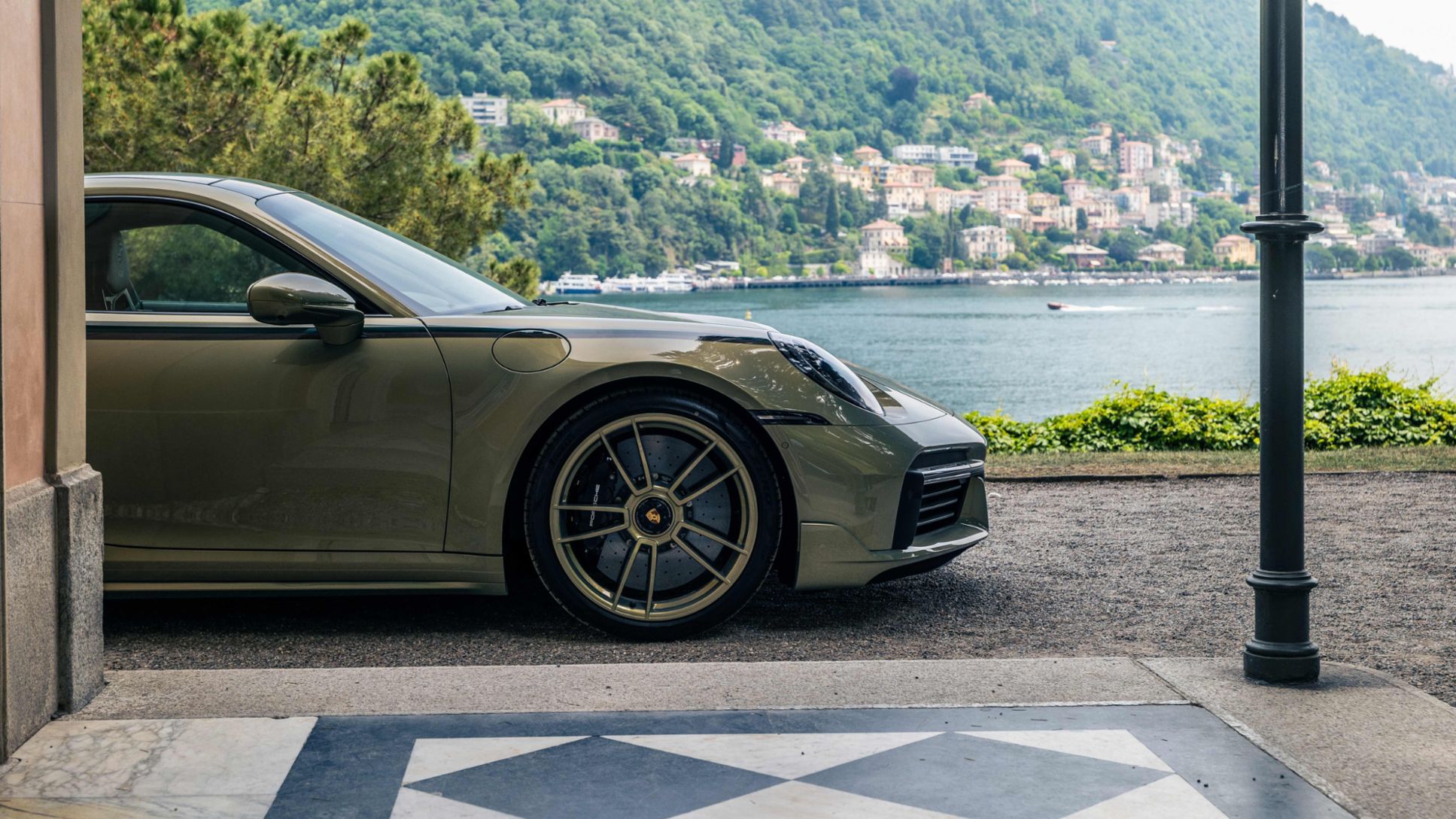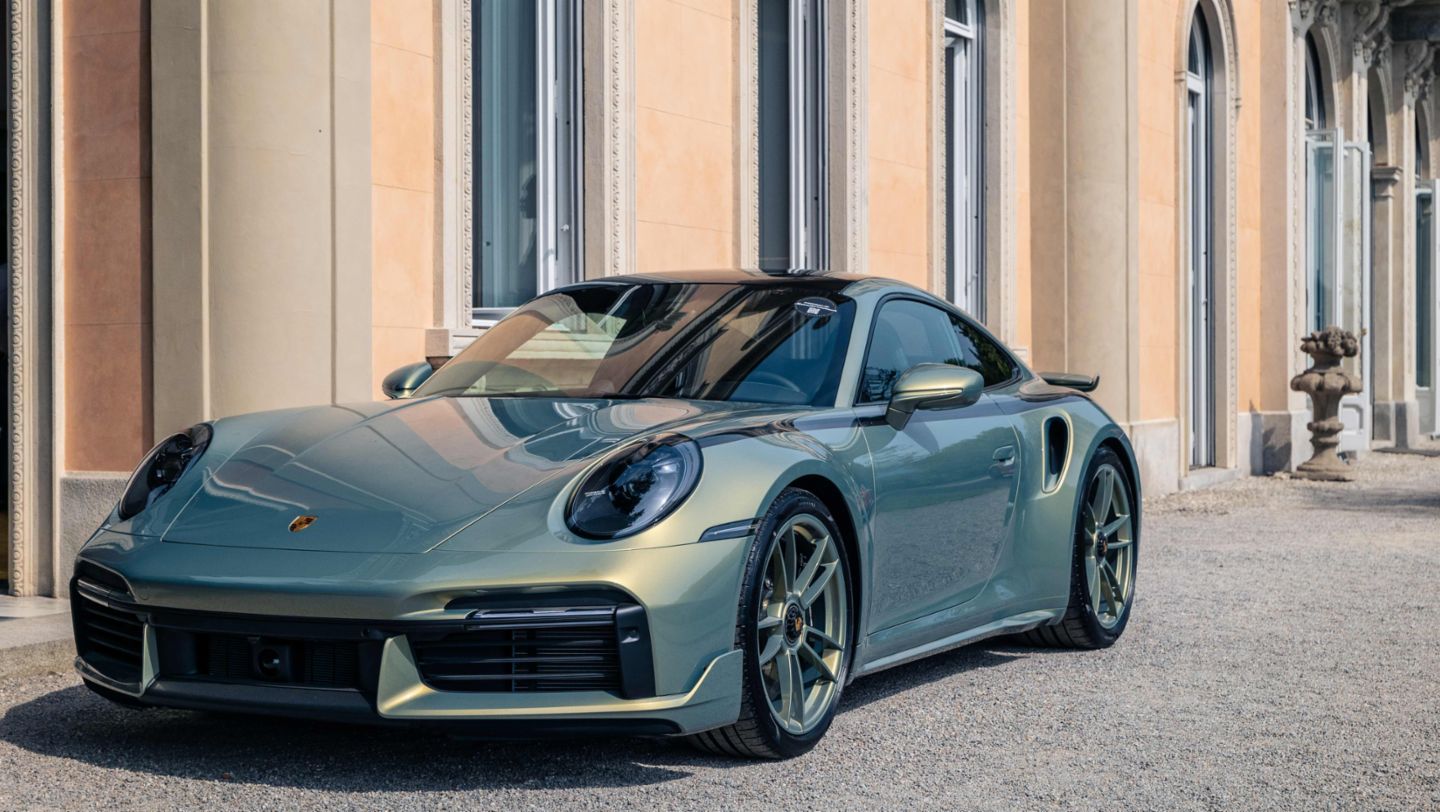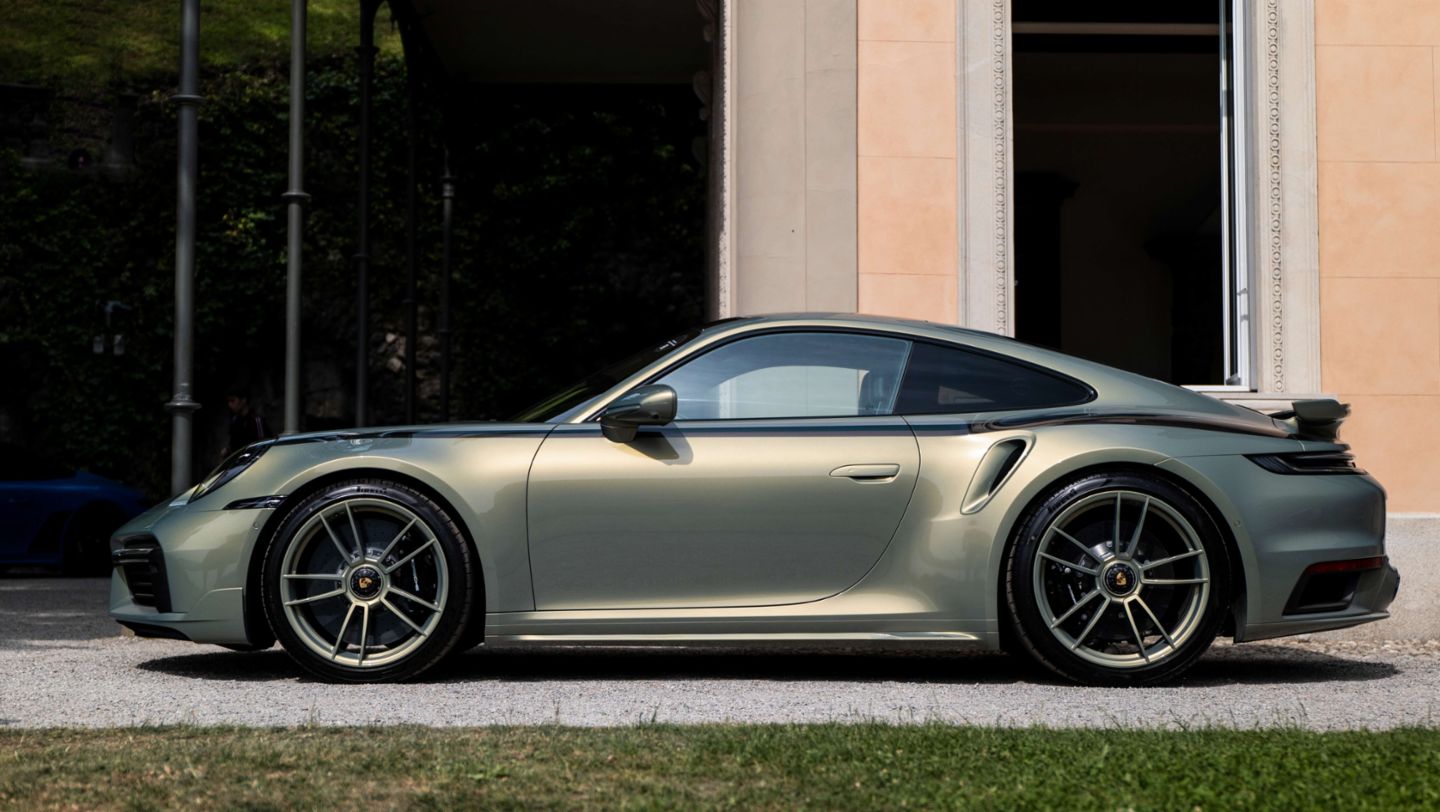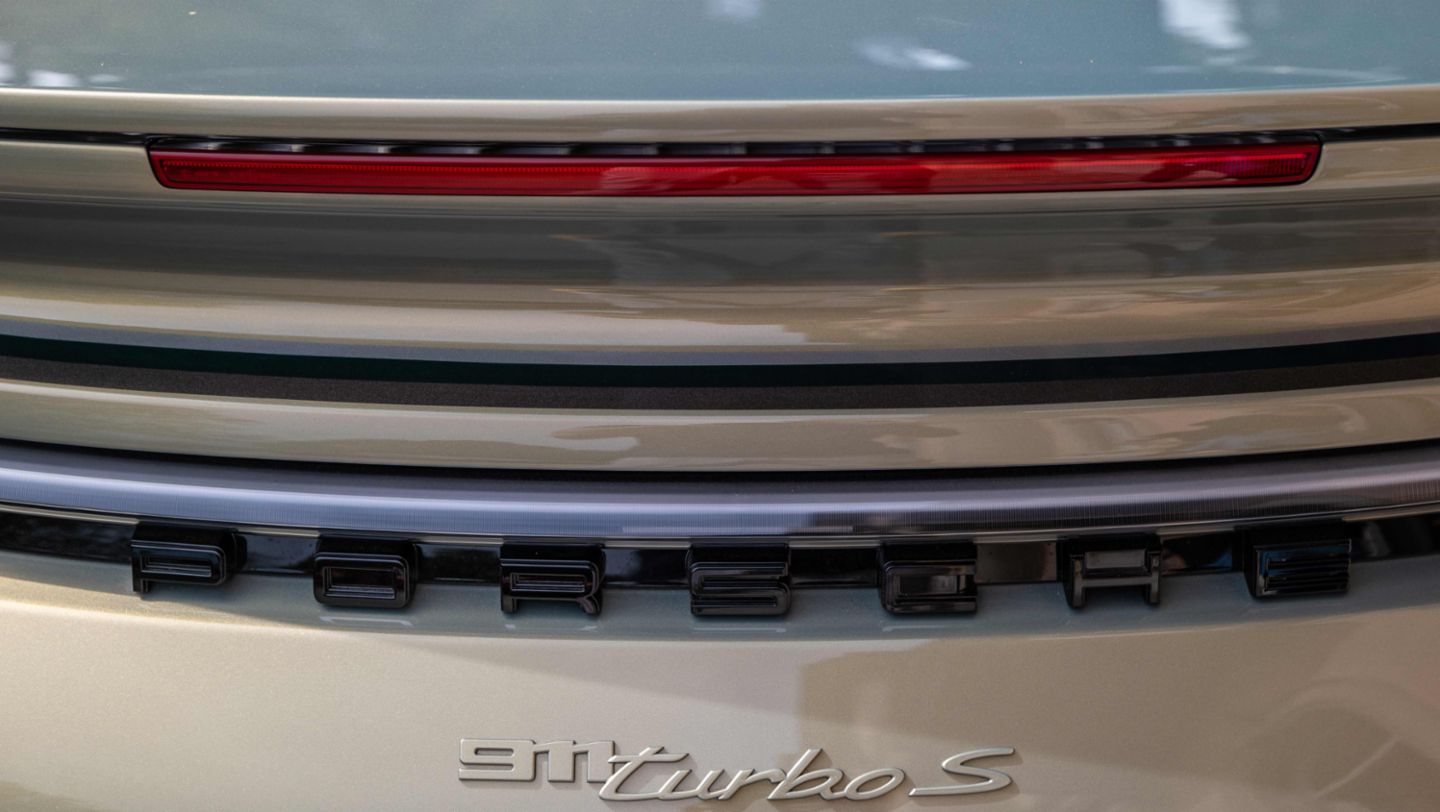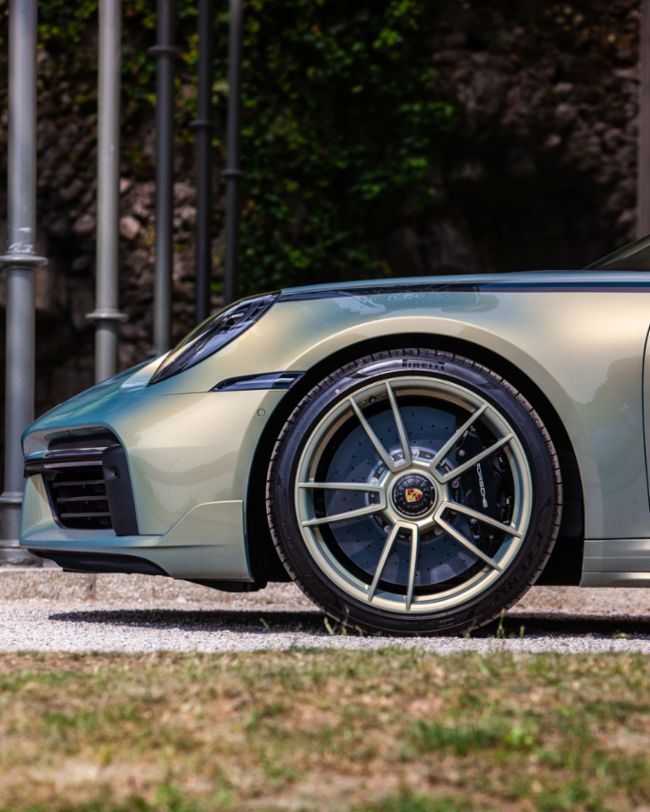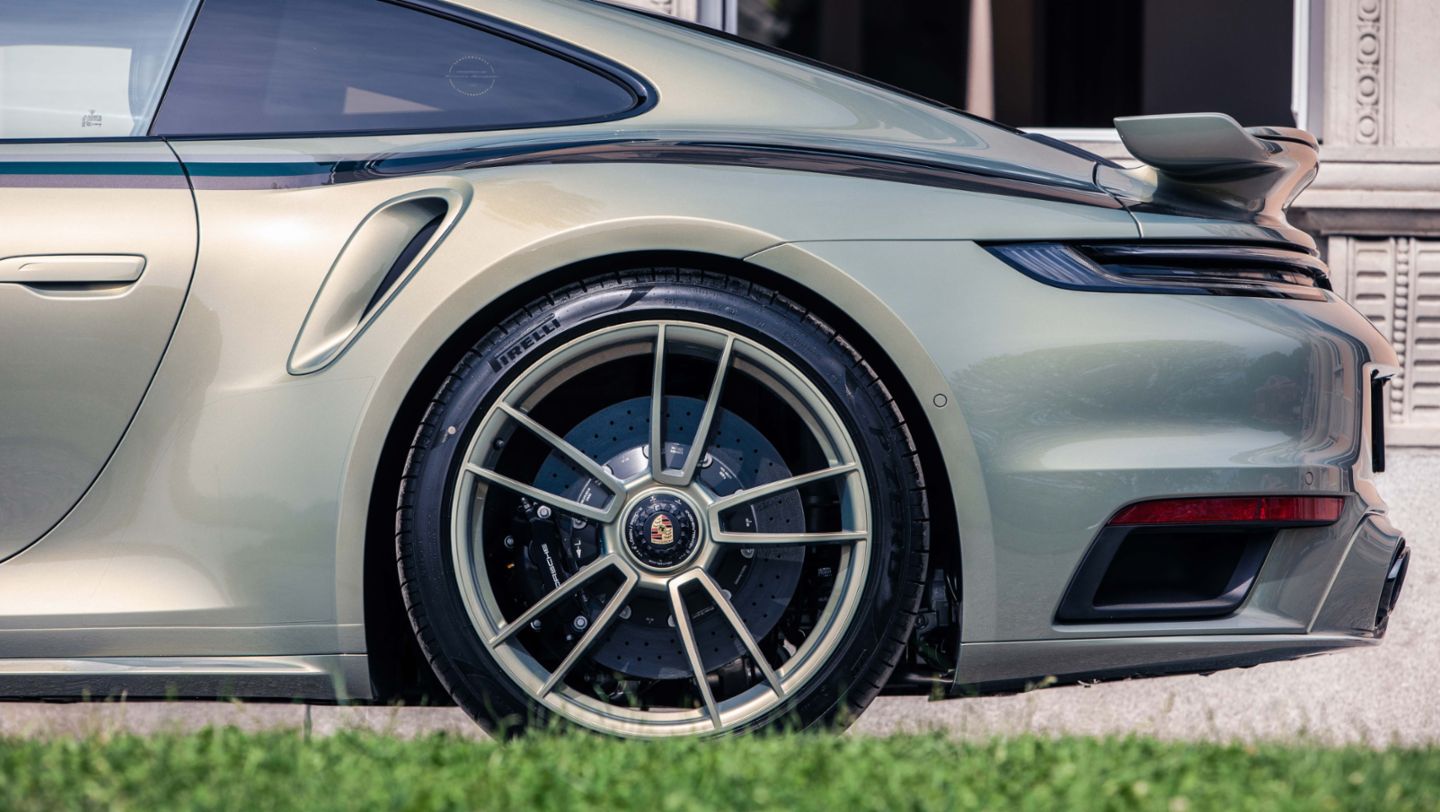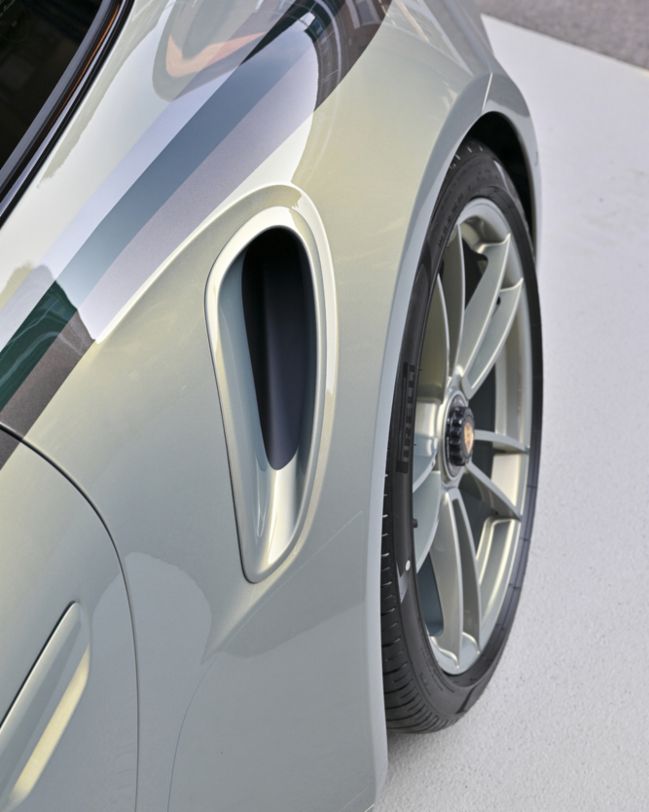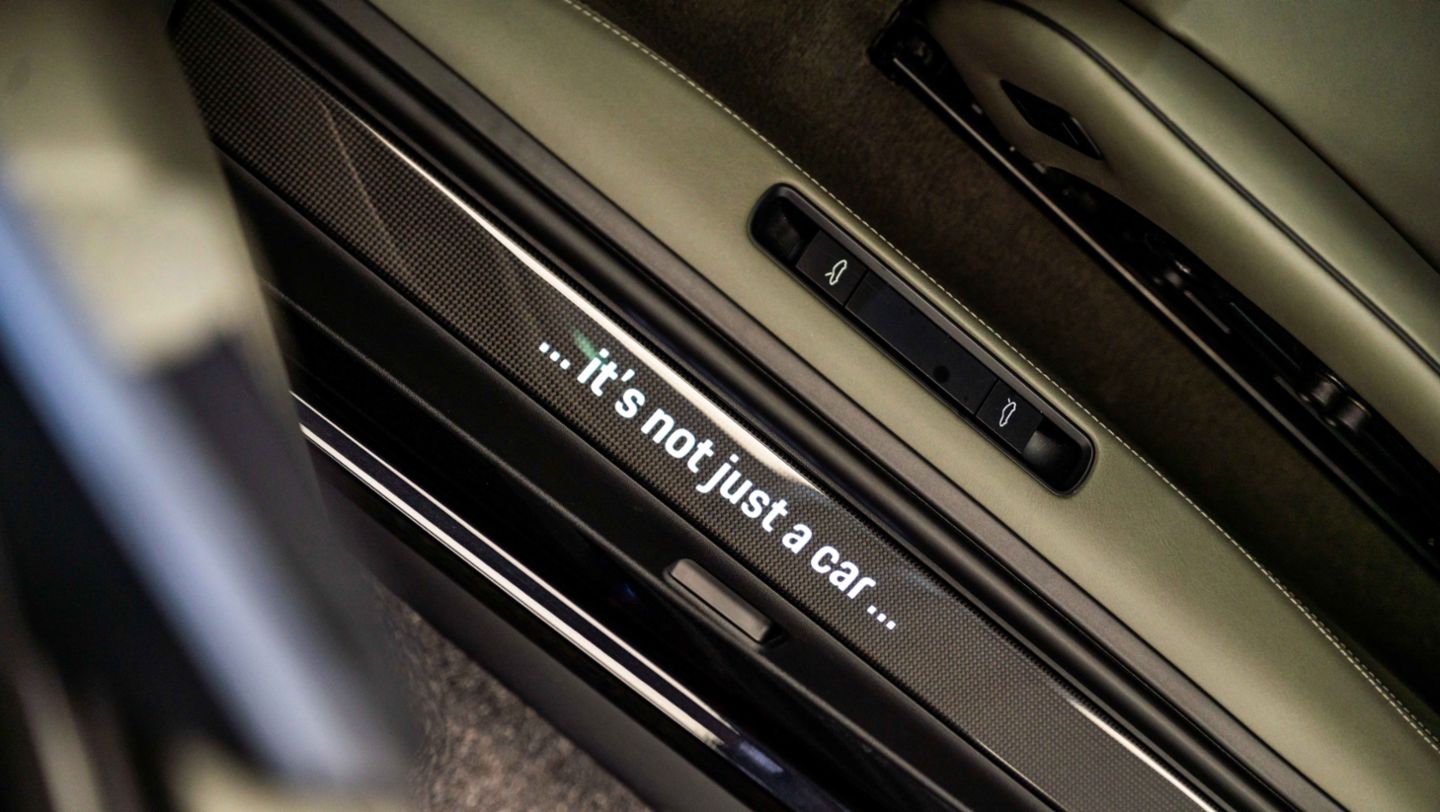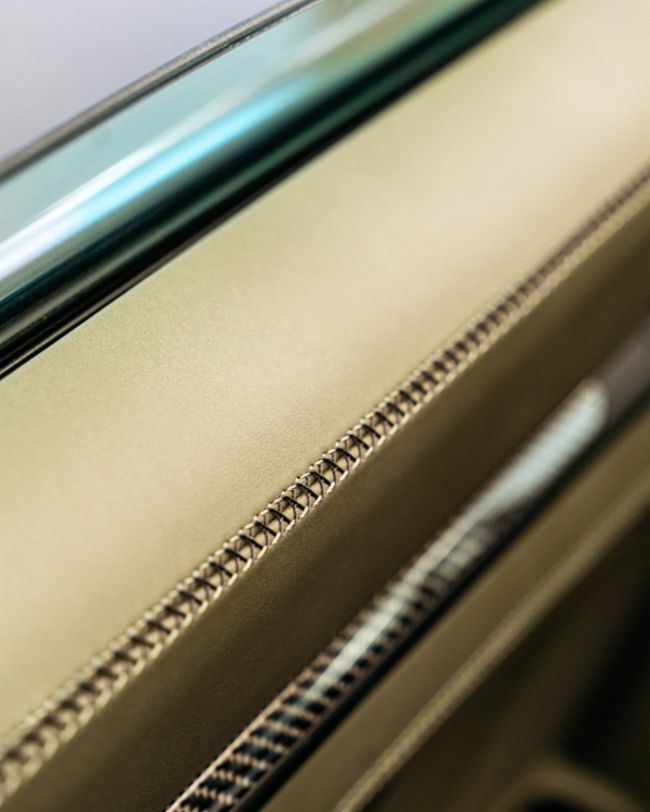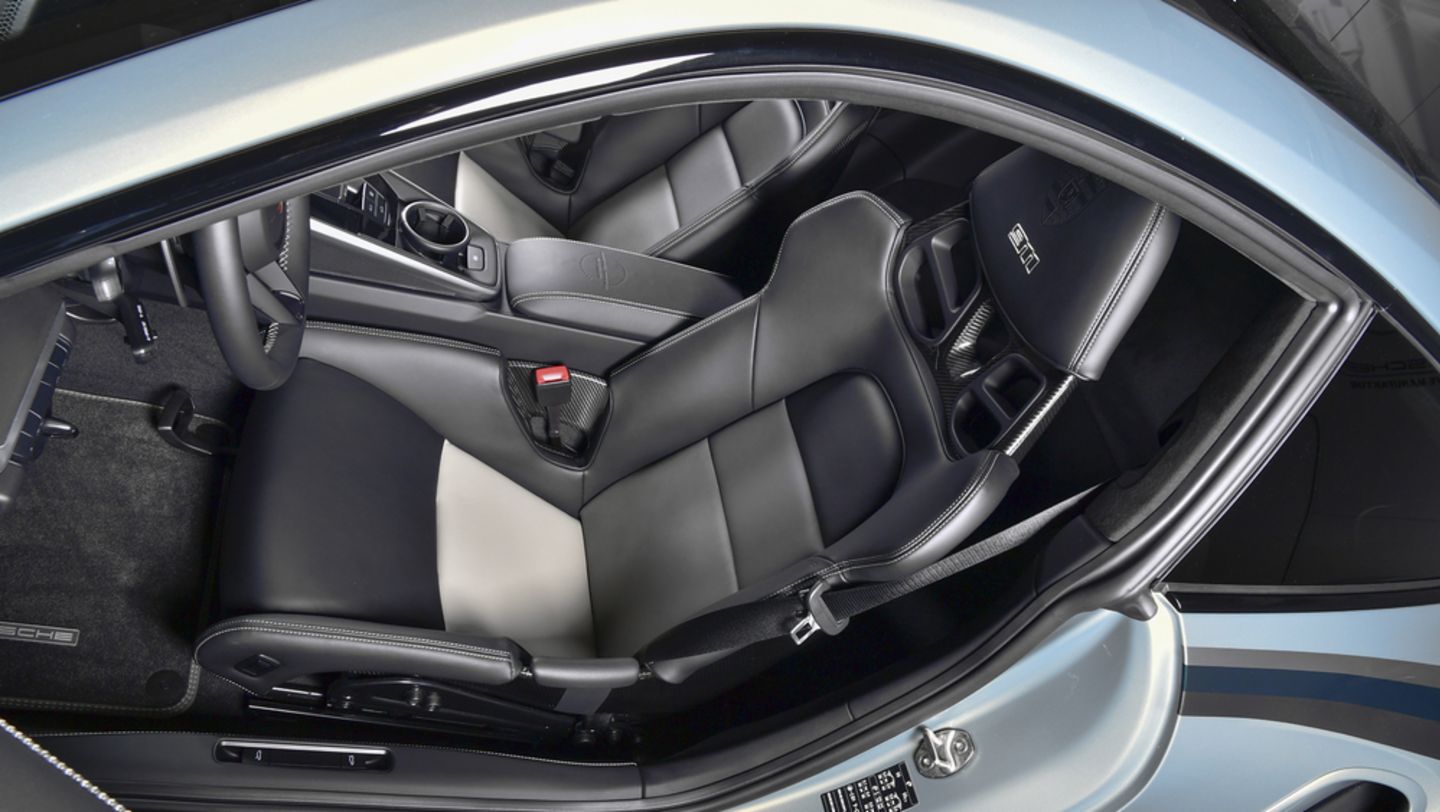With many special features such as the extraordinary “Chromaflair”-effect paint in Urban Bamboo, painted design strips on the body, and the leather trim offset with different colours and copious cross-stitching, this model exemplifies everything that is possible with the help of the Sonderwunsch programme.
The appetiser was such as success that it sealed its own fate: the Sonderwunsch model has since been sold to an enthusiast. Guglielmo Miani, head of the Milan-based luxury brand Larusmiani, fell in love with the unique vehicle during a consultation in Zuffenhausen. The sports car could then be seen at the “Fuori Concorso 2022” at Lake Como. Established by Guglielmo Miani, this event series celebrates the most attractive aspects of automotive culture.

The inspiration for the extensively configured, Sonderwunsch model was one of the four Porsche 959s that the department that was the predecessor to the Porsche Exclusive Manufaktur had built for a customer in the late 1980s. With its decades of experience, the sports car manufacturer has been one of the pioneers of factory customisation. With more than 1,000 additional options across all model lines, Porsche has more than doubled its customisation options since 2012.
Handcrafted: elaborate "Chromaflair" process
Among other features, the Sonderwunsch 911 Turbo S Coupé shares its striking paintwork with the Porsche 959. Today’s interpretation eschews polarising Dark Gold, however, in favour of a painstakingly hand-painted Urban Bamboo using the “Chromaflair” process. With this technology, a total of five coats of paint are applied. The special feature is the wafer-thin pigments in the top coat, which result in the beholder seeing different shades of colour depending on the viewing angle and light. In addition to Urban Bamboo, Porsche also offers the “Chromaflair”-effect paint in Python Green, Magic Magenta, Shifting Carbon and Explosive Gold.
As with the historic 959, a tri-colour design stripe extends from the front wings and across the doors and shoulders all the way to the rear. The line followed by the stripe was first adapted and optimised for the shape of the 911 by designer Grant Larson of Style Porsche using tape in the design phase. The painted-on stripe is applied by hand in the colours Rock Green Metallic (699), Jet Green Metallic (Z6H) and Anthracite Brown Metallic (M8S).
This theme continues in the interior: three stripes of colour also adorn the centre of the door panels. The centre panels of the front seats also form a contrast to the black leather upholstery, and are colour-blocked in Slate Grey, Agave Green and Island Green. The cross-stitching in Island Green is another eye-catcher in the interior. These elaborately hand-stitched seams can be found at the top of the dashboard, in the door panels, and in the side panels in the rear. The all-leather luggage compartment underlines the elegant character of this 911 Turbo S.
The equipment list for this Sonderwunsch model includes almost 50 items. A very special detail, however, is available free of charge for each unique item: the Sonderwunsch mark. This also indicates the year in which the respective project was completed. Inspired by the historic Manufacturer’s World Champion decals of the 1970s, the round marking is positioned in the rear side window on the driver’s side. In the 911 Turbo S showcased here, the marking is also embossed into the lid of the storage compartment on the centre console.

About Porsche Exclusive Manufaktur
Porsche Exclusive Manufaktur and Porsche Classic enhance and restore unique sports cars with a combination of skilled craftsmanship and attention to detail. As part of its strategy, the sports car manufacturer is reinterpreting its legendary Sonderwunsch programme from the late 1970s, which will enable it to design individualised, one-off cars – co-created by the customer and professionally produced by Porsche.
This range of services encompasses the areas of Factory Commissioning for individual customer colour and material requests directly in production, as well as subsequent Factory Re-Commissioning, and Factory One-Off after vehicle delivery to the customer. Whereas Factory Re-Commissioning is all about individual colours and materials, the Factory One-Off service is a systematic new technical development. Depending on the vehicle’s age, the technical experts at Porsche Exclusive Manufaktur or Porsche Classic take care of implementation.
